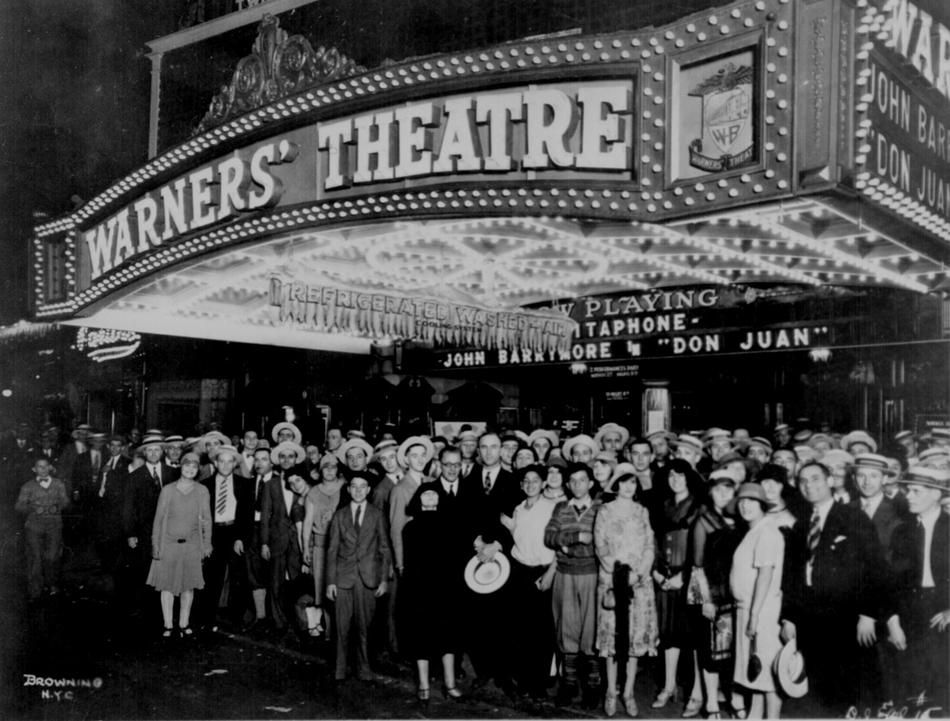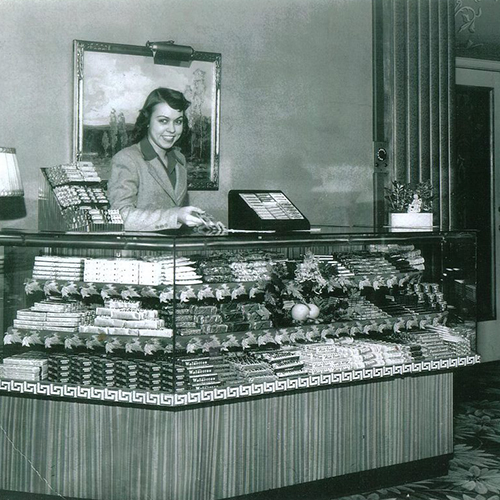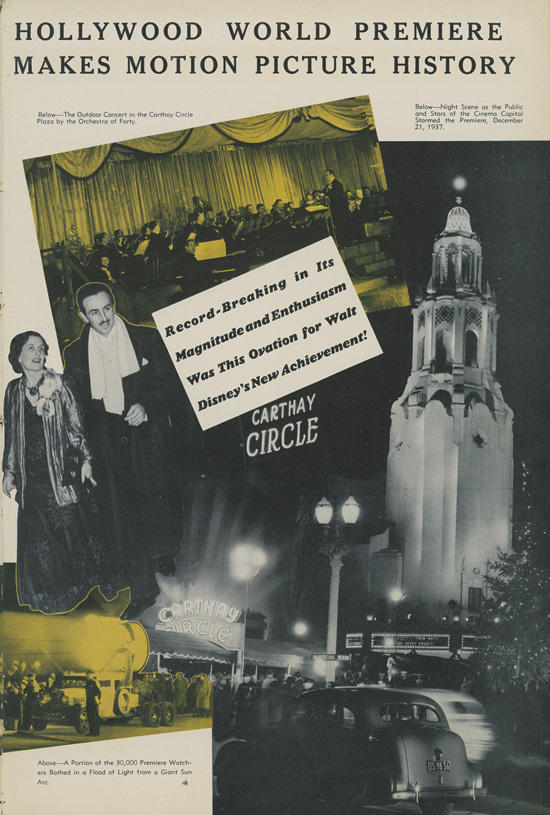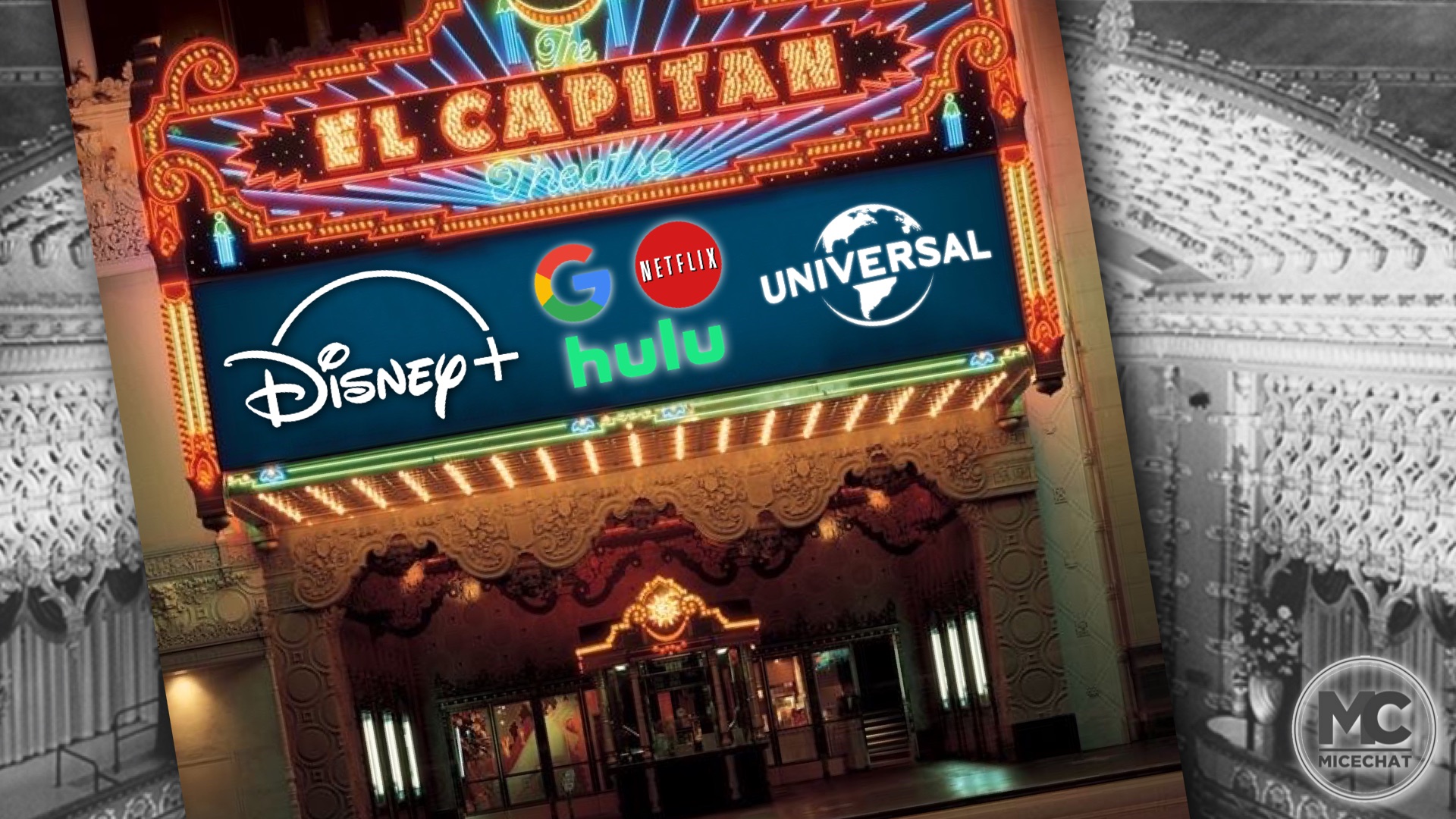Restrictions on movie studios owning theaters might soon disappear! A federal judge has cleared the way for the termination of the Paramount Decree of 1948. To put it simply, this is the first step toward movie studios being able to merge with theatrical chains.
Could a Disney theater multiplex be on the way to your home town? Let’s take a look at the possibilities . . .and the evolution of the business of movie theaters.

What is Vertical Integration?
During the first half of the twentieth century, the major film studios owned some of the theaters where their motion pictures were shown, either outright or in partnerships. This business model allowed those theater chains to exhibit only films produced by the studio that owned them. This secured an outlet for all films made by a studio to become more commercially successful.
Paramount Pictures would become the face of this practice during the early days of the entertainment industry.
The Beginning of Film Distribution During the Silent Movie Era
In 1916 Adolph Zukor, one of the three founders of Paramount Pictures, developed a system of block booking that would ensure all the studio’s films would be profitable through film distribution. In this model, theater owners were forced to rent Paramount’s star films along with groups or ‘blocks’ of other films that would be perceived as less desirable.
In other words, the studios were vertically integrated by limiting competition from rival studios.
By 1945, the studios (Paramount Pictures, Metro-Goldwyn-Mayer, Warner Bros., 20th Century Fox, RKO Radio Pictures, Universal Pictures, Columbia Pictures, and United Artists) produced, released and marketed their films, and even owned the cinemas in which they were shown. During this era, the exhibition of films was the most profitable sector of the film industry.

This practice was extended by the studios’ attempts to acquire as many cinemas as possible during the 1920s. By the 1930s, studios were putting most of their investments into exhibition, which resulted in them owning nearly three-quarters of first-run theaters in the continental United States.
However, this all changed in 1948 due to a landmark decision made by the United States Supreme Court.

The Paramount Decrees
United States v. Paramount Pictures, Inc. (also known as the Paramount Decrees) was an antitrust case that ended the film studios’ ability to own their own theaters and ended the practice of vertical integration in the industry.
The Supreme Court affirmed that the existing distribution model was in violation of the United States antitrust law, which prohibited certain exclusive dealing arrangements and was not in favor of the public interest.
Under the new ruling, studios were ordered to get rid of their distribution arms or theaters, requiring them to sell their theaters to independent companies.
The era of the studios’ ability to monopolize the theatrical marketplace and control what was being exhibited at theaters had ended. However, the emergence of new technologies would create new types of competition for theaters which no one could have envisioned in the 1940s.
Technology and the Ever-Changing Entertainment Landscape
Since 1948, many significant technological advances changed the way consumers interact with and where they watch motion pictures. These advancements, like television, the internet, and DVDs, did not exist in the 1930s and 1940s.
In fact, by the 1960s, the evolution of television technology made owning a TV set affordable and eventually ubiquitous. This shift in consumer viewing habits made it possible for networks, like ABC and NBC, to create their own movies produced specifically for television. This kind of innovative programming was also supplemented by displaying theatrical films, which were edited to comply with the television code, as special television events.
The advent of cable networks in the 1970s and 1980s, like the Disney Channel, ONTV and HBO, offered consumers more choices to view original and theatrical films from the comfort of their own homes at an affordable price point.
The 2000s would bring even more competition with digital distribution. New streaming companies, like Netflix, Amazon, and Hulu, would offer new content that was often on par with the quality of theatrical films and not subject to the limitations of the television code. Even Disney would jump into the game with its own streaming service, Disney+.
Each advance in technology made it easier for consumers to get content at home and on electronic devices, and more difficult for theaters to compete for viewership.
The Current Theater Business Model
Traditionally, a studio receives a larger percentage of ticket sales during the opening weekend of a film. In the following weeks, the percentage shifts between 45% to 55% that the theater owner gets to keep depending on individual contracts for the films.
To help a theater hedge against films that may flop at the box office, contracts between them and the distributor may include language on how percentages are determined based on ticket sales. In the event a film underperforms, the theater owner may strike a deal where the studio receives a smaller percentage of a poorly performing film, while receiving a higher percentage if the film is a hit.
During the first few weeks of the movie’s release, theaters are willing to give distributors a higher percentage of ticket sales so that they can generate a high volume of purchasing at the concession stands, where they keep 100% of the profits.

At the dawn of the great pandemic of 2020, theaters began to temporarily shutter over health concerns of COVID-19. With theaters unable to operate, studios began experimenting with video on demand as a distribution method for films that were meant for theatrical release so that consumers could watch them while sheltering at home. Of course, that shuts already struggling theaters out of the mix.
Earlier this week, Disney announced at its shareholder meeting that “Mulan” would forgo its planned theatrical release and premiere on Disney+ on Sept. 4 for a rental price of $29.99.
Disney and Theatrical Distribution
It should be noted that the restrictions of the Paramount Decrees didn’t apply directly to small studios like Disney, as the Walt Disney Studio wasn’t part of the original case and was therefore not subject to the ruling.
During the 1940s, Disney didn’t have a distribution arm as it does today. Films like “Snow White and the Seven Dwarfs,” “Pinocchio,” “Fantasia,” “Dumbo,” and “Bambi” were distributed by RKO Radio Pictures. This also included package films like “Saludos Amigos” and “Make Mine Music” (releases made up of two or more short films with bridging sequences).
Buena Vista Distribution Company was founded in 1953 to distribute Disney’s films. Later known as Buena Vista Pictures Distribution and then Walt Disney Studios Motion Pictures, that segment of the Walt Disney Company followed industry practice and has been compliant to the Paramount Decrees.
Overturning the Paramount Decrees
According to the Department of Justice, abolishing the Paramount Decrees is a long-overdue move that will acknowledge the shifting realities of an industry that has come to rely on online revenue. “As the movie industry goes through more changes with technological innovation, with new streaming businesses and new business models, it is our hope that the termination of the Paramount Decrees clears the way for consumer-friendly innovation.”
The elimination of the Paramount Decrees will open the door for the studios to acquire or partner with theater chains as they did prior to 1948. If the ban on vertical integration is officially terminated, it’s quite likely major movie studios will find it advantageous to merge with large national theater circuits. . . and reinvent the way theaters operate.
Fears of Independent Filmmakers
With the Decrees now lifted, independent filmmakers feel that block booking could leave little opportunity for them to show their art in mainstream cinemas.
Restrictions on block booking and circuit dealing may possibly be the first battle during the two-year “sunset period,” a time that allows theater owners and studios to prepare for the new rules.
Individuals from the independent film community have stated that streaming services like Netflix, Apple, and Amazon Prime could further complicate things by buying up theaters and creating their own vertically integrated models, which may leave indy filmmakers out of the picture.
What Does This Development Mean for Moviegoers?
It’s hard to tell what the short and long-term impact will be for the general public’s theater experience. With streaming services getting into full swing and creating new content, how studios like Disney and Warner Bros. use theaters to leverage their titles and what they decide to produce is still up for discussion.

However, the overturning of the Paramount Decrees may open the door for tech companies, like Netflix, Apple, and Amazon, to expand their businesses into the theatrical experience. This even creates possibilities for companies like Microsoft, Facebook, and Google to become a player.
Although the Decree has been greenlit for elimination, Disney and Netflix have already tested the waters of owning a movie theater.
The El Capitan and Egyptian Theaters in Hollywood
In the 1980s, Disney purchased and renovated the legendary El Capitan Theatre in Hollywood, which became one of Disney’s flagship movie houses. The renovation of the venue included the installation of a Disney’s Soda Fountain and Studio Store, where Disney merchandise and desserts can be purchased. The El Capitan reopened under Disney management in 1991 with the premiere of “The Rocketeer.”
Netflix recently purchased Grauman’s Egyptian Theatre, a silent-film era movie palace built in 1922, from the American Cinematheque.

According to Netflix, it will partner with the American Cinematheque, which will expand its film festivals and events, as well as continue to autonomously program screenings for the weekends. Netflix will use the revamped venue for special events, screenings and premieres during the week.
It’s Almost Time To Get Away!
While you may not be ready to travel again just yet, there is no better time than right now to lock in low rates on future travel. Disney is now booking through most of 2021 and Universal Studios and Walt Disney World are now open to guests. Give your family something to look forward to and get yourself a good deal. Let MiceChat’s vacation partners at Get Away Today do all the hard work for you – Visit Get Away Today HERE
Let’s Hear From You

Are you a theater fan? Would you rather watch a new film at home or on the big screen? Have you worried that theater chains like AMC might not survive the dual ravages of the pandemic and video on demand? Who would you like to see invest in theaters, and what changes and enhancements would make the experience more attractive for you? Share your thoughts in the comments below.



You must be logged in to post a comment.